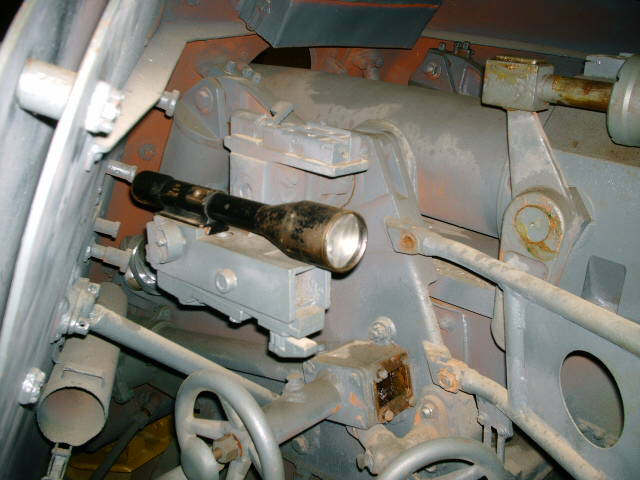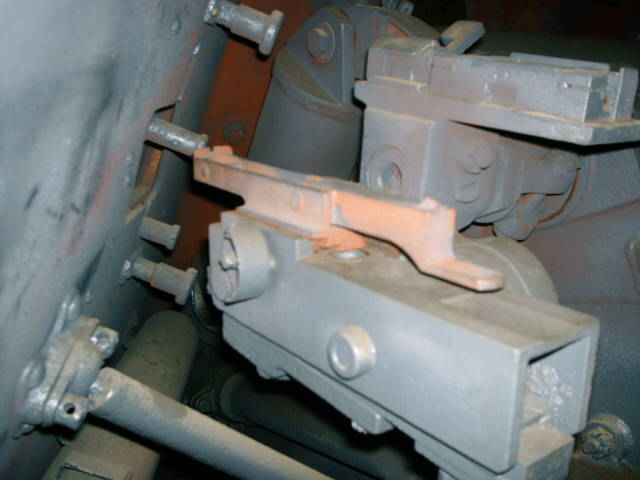
Ralph and Leon Lovett serve as crew for the 7,5 cm Panzer Abwehr Kanone (PAK "40) 1940. This piece required a considerable restoration effort to get to this point.
German WW2 Anti-Tank Gun 7,5cm PAK 40
The 7,5cm Panzer Abwehr Kanone 1940 L/46 like the smaller PAK 36 was produced by Rheinmetall-Borsig. It was intended to replace the PAK 36 and the PAK 38, however, all three models served on until the end of the war. The 7,5cm PAK 40 entered service by the end of 1941, corresponding with the German Anti-Tank Branch’s change of name to Panzer Jaeger. The first designation for the piece was s.PAK or schwere Panzer Abwehr Kanone. It was, for the most part, an up scaled version of the 5cm PAK 38. The wheels are a bit wider, shield is a bit straighter and it lacks the PAK 38’s caster wheel. It is also quite a lot heavier. (1500 kg or 3306 lbs) With this, however, comes a tremendously capable gun. The 7,5cm PAK 40 first saw service on the Eastern Front in the Battle of Kharkov May 1942. Unlike the pieces it replaced the 7,5cm PAK was a match for the new Soviet T-34 and virtually all other Allied Tanks of the war. With the AT Shell 39 91mm of armor plate could be penetrated at 400 meters. At 2000 meters still it penetrated 63mm. Although rarely available, with the AT Shell 40 up to 108 mm of armor plate was penetrated. Due to these facts, the PAK 40 would never see obsolescence during WW2 and is considered the best standard German Anti-Tank Gun of the war.
The PAK 40 has basically the same layout as the earlier PAK 36. It has split trails, a semi automatic horizontal sliding wedge breech mechanism with elevation and traversing handles on the left side for the easy use by the gunner. A direct fire scope is used for aiming and during transport an “iron sight” is fitted into the sight mount. In this way, there is always a sight available even if the gun and crew are ambushed while in movement. Also similar to the PAK 36, the trigger is a push button on the elevation handle. The PAK 40 has solid rubber tires with roller barring fitted steel wheels. The recoil mechanism is hydro-pneumatic and the barrel is fitted with a single equilibrator. An equilibrator takes some of the pressure off the elevation gear box, making it easier to move the tube upward. On the end of the muzzle is its distinctive double baffle muzzle brake.
The German 7,5cm PAK 40 had a number of prime movers. The Steyr Ost (RSO), the 3 ton Opel Blitz and the Sd. Kfz. 251 were among its most well known towing vehicles. Captured vehicles are sometimes pictured towing the PAK 40 such as British Universal Gun Carriers, the French Renault UE and the Soviet Artillery Carrier 630.
The PAK 40 in the Lovett Collection is in very good restored condition. It is complete with ammunition, optical and “iron sights”. Many months of effort and a complete “ground up” restoration were necessary to bring the piece back into operational condition. The PAK 40 is currently painted typical German “Panzer Grey”.
Caliber 75mm (2.95 in)
Length of tube 3700mm (145.67 in)
Traverse 65 degrees
Elevation -5 degrees to +22 degrees
Weight complete 1500 kg (3306 lbs)
Muzzle Velocity (AP40) 933 m/s (3060 ft/sec)
Shell weight (AP) 6.8 kg (15 lbs)
Shell weight (AP40) 3.2 kg (7 lbs)
Armor penetration (AP) 106mm at 500 yards (30 degrees)
Armor penetration (AP40) 115mm at 500 yards (30 degrees)
(Data from WW2 Fact Files “Anti-Tank Weapons by Chamberlin & Gander)
7,5 cm Panzer Abwehr Kanone (PAK "40) 1940
(click on the thumbnail for larger image)
 |
 |
 |
 |



